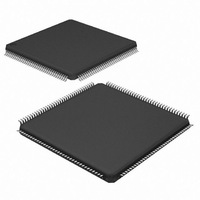DP83816AVNG/NOPB National Semiconductor, DP83816AVNG/NOPB Datasheet - Page 7

DP83816AVNG/NOPB
Manufacturer Part Number
DP83816AVNG/NOPB
Description
IC MEDIA ACCESS CTRLR 144-LQFP
Manufacturer
National Semiconductor
Datasheet
1.DP83816AVNGNOPB.pdf
(106 pages)
Specifications of DP83816AVNG/NOPB
Applications
*
Interface
*
Voltage - Supply
*
Package / Case
144-LQFP
Mounting Type
Surface Mount
For Use With
DP83816-MAAP - BOARD EVALUATION DP83816
Lead Free Status / RoHS Status
Lead free / RoHS Compliant
Other names
*DP83816AVNG
*DP83816AVNG/NOPB
DP83816AVNG
*DP83816AVNG/NOPB
DP83816AVNG
Available stocks
Company
Part Number
Manufacturer
Quantity
Price
Company:
Part Number:
DP83816AVNG/NOPB
Manufacturer:
NS
Quantity:
5 000
Company:
Part Number:
DP83816AVNG/NOPB
Manufacturer:
Texas Instruments
Quantity:
10 000
Part Number:
DP83816AVNG/NOPB
Manufacturer:
NS/国半
Quantity:
20 000
2.0 Pin Description
Media Independent Interface (MII)
Note: MII is normally in TRI-STATE, unless enabled by CFG:EXT_PHY. See Section 4.2.2.
COL
CRS
MDC
MDIO
RXCLK
RXD3/MA9,
RXD2/MA8,
RXD1/MA7,
RXD0/MA6
RXDV/MA11
RXER/MA10
RXOE
TXCLK
TXD3/MA15,
TXD2/MA14,
TXD1/MA13,
TXD0/MA12
TXEN
Symbol
LQFP Pin
No(s)
12,
10,
25,
24,
23,
11,
28
29
15
14
13
31
22
30
5
4
6
7
(Continued)
Dir
I/O
O
O
O
O
O
O
O
O
I
I
I
I
I
I
I
Collision Detect: The COL signal is asserted high asynchronously by the external
PMD upon detection of a collision on the medium. It will remain asserted as long as
the collision condition persists.
Carrier Sense: This signal is asserted high asynchronously by the external PMD
upon detection of a non-idle medium.
Management Data Clock: Clock signal with a maximum rate of 2.5 MHz used to
transfer management data for the external PMD on the MDIO pin.
Management Data I/O: Bidirectional signal used to transfer management
information for the external PMD. (See Section 3.12.4 for details on connections
when MII is used.)
Receive Clock: A continuous clock, sourced by an external PMD device, that is
recovered from the incoming data. During 100 Mb/s operation RXCLK is 25 MHz
and during 10 Mb/s this is 2.5 MHz.
Receive Data: Sourced from an external PMD, that contains data aligned on nibble
boundaries and are driven synchronous to RXCLK. RXD[3] is the most significant
bit and RXD[0] is the least significant bit.
BIOS ROM Address: During external BIOS ROM access, these signals become
part of the ROM address.
Receive Data Valid: Indicates that the external PMD is presenting recovered and
decoded nibbles on the RXD signals, and that RXCLK is synchronous to the
recovered data in 100 Mb/s operation. This signal will encompass the frame,
starting with the Start-of-Frame delimiter (JK) and excluding any End-of-Frame
delimiter (TR).
BIOS ROM Address: During external BIOS ROM access, this signal becomes part
of the ROM address.
Receive Error: Asserted high synchronously by the external PMD whenever it
detects a media error and RXDV is asserted in 100 Mb/s operation.
BIOS ROM Address: During external BIOS ROM access, this signal becomes part
of the ROM address.
Receive Output Enable: Used to disable an external PMD while the BIOS ROM is
being accessed.
Transmit Clock: A continuous clock that is sourced by the external PMD. During
100 Mb/s operation this is 25 MHz +/- 100 ppm. During 10 Mb/s operation this clock
is 2.5 MHz +/- 100 ppm.
Transmit Data: Signals which are driven synchronous to the TXCLK for
transmission to the external PMD. TXD[3] is the most significant bit and TXD[0] is
the least significant bit.
BIOS ROM Address: During external BIOS ROM access, these signals become
part of the ROM address.
Transmit Enable: This signal is synchronous to TXCLK and provides precise
framing for data carried on TXD[3-0] for the external PMD. It is asserted when
TXD[3-0] contains valid data to be transmitted.
7
Description
www.national.com











